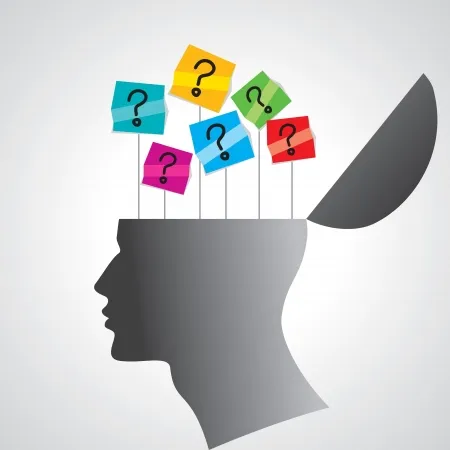Personality and Its Abnormal Behavior

Image Source
Usual Questions About Personality
What kind of person would you say you are?
What do you see as unmistakable about your personality?
How well do you know yourself?
Are there parts of your personality of which you are unaware?
Do others know you as you most likely are aware yourself?
What are the best and most exceedingly terrible things about your personality?
Questions of these kind can be easily ask, yet are frequently hard to find answers. However, they go specifically to the embodiment of what we are as human creatures. Personality is what makes us what we are and that which makes us unique in relation to others. Individuals who are particularly extraordinary are said to have personality. Contingent upon how somebody influences us, he or she might be seen as having a good or bad personality.
In the previous decades, the study of personality and its disorders has turned out to be vital to the study of abnormal psychology. Over the span of clinical work, they experience subjects with immeasurably extraordinary pathologies. Some are amidst a depressive scene, and some must adapt to the lasting impacts of injuries a long ways past the scope of normal human experience. Some are terribly out of contact with reality, and some have just minor problems in living as opposed to clinical disorders.
Despite the fact that the problems of patients change, everybody has a personality. Personality disorders involve a position of diagnostic noticeable quality today and constitute an extraordinary range of scientific study. The issues included are mind boggling, unquestionably considerably more refined than the ordinary comprehension of personality.

Image Source
The word personality is gotten from the Latin expression persona, initially speaking to the showy mask utilized by old sensational players. As a mask accepted by an actor, persona recommends a falsification of appearance, that is, the ownership of qualities other than those that really characterize the person behind the mask. In time, the term persona lost its meaning of falsification and dream and started to speak to not the mask, but rather the genuine person's discernible or unequivocal highlights.
Through history, the significance of the term has moved from outer figment to surface reality lastly to dark or hidden inward qualities. This last importance comes nearest to contemporary utilize. Today, personality is viewed as an unpredictable example of profoundly implanted psychological characteristics that are communicated consequently in practically every range of psychological functioning. Personality is currently seen as the designing of characteristics over the whole network of the person.
Personality is regularly mistaken for two related terms, character and temperament. Albeit each of the three words have comparative implications in easygoing use, character alludes to characteristics gained amid our childhood and implies a level of adjustment to prudent social standards. Temperament, interestingly, alludes not to the powers of socialization, but rather to an essential natural attitude toward specific behaviors. One person might be said to be of good character, though someone else may have an irritable temperament. Character in this way speaks to the solidified impact of support, and temperament speaks to the physically coded impact of nature.

Image Source
Personality Disorders
The idea of personality disorders requires a comprehension of their part in the study of abnormal behavior. The Diagnostic and Statistical Manual of Mental Disorders (DSM) is viewed as the authoritative manual for mental disorders by psychologists and psychiatrists. The first official edition, distributed in 1952, was vigorously impacted by past systems built up by the Army and the Veterans Administration to help with understanding the mental health problems of World War II servicemen.
DSM advanced past its unique military reason, turning into the standard for all of abnormal behavior. Presently in its fourth edition, the DSM-IV is broadly viewed as the official order system or scientific classification for use by mental health professionals. It depicts every single mental disorder broadly accepted to exist, and also an assortment of others temporarily set forward for additionally investigate.
The disorders in the DSM are gathered as far as a multiaxial model. Multiaxial actually implies multiple axis. Every axis speaks to an alternate sort of data. The multiaxial model exists since a few means is required whereby the different manifestations and personality characteristics of a given patient can be united to paint a photo that mirrors the functioning of the entire person.

Image Source
For instance, depression in a narcissistic personality is not quite the same as depression in a needy personality. Since narcissists see themselves as better than every other person, they typically end up plainly discouraged when gone up against with target confirmation of disappointment or deficiency excessively significant, making it impossible to overlook. Their typically puffed-up confidence empties, leaving sentiments of depression afterward. Conversely, subordinate personalities look for intense others to deal with them, instrumental surrogates who stand up to a coldblooded world.
Here, depression normally takes after the passing of a noteworthy guardian. The purpose of the multiaxial model is that every patient is more than the whole of his or her judgments. Both are discouraged, yet for altogether different reasons. For each situation, what separates them is not their surface side effects, but instead the importance of their side effects with regards to their hidden personalities. By considering side effects in connection to further characteristics, a comprehension of the person is picked up that rises above either manifestations or qualities considered independently. To state that somebody is a discouraged narcissist, for instance, passes on significantly more than does the name of depression or narcissism alone.
5 Axis of Multiaxial Model
Axis I: Clinical Syndromes
Axis II: Personality Disorders
Axis III: General Medical Conditions
Axis IV: Psychosocial and Environmental Problems
Axis V: Global Assessment of Functioning

Image Source
The multiaxial model attracts consideration regarding every single important factor that nourish into and sustain specific side effects, and it likewise controls our comprehension of how psychopathology creates. By and large, the connection of psychosocial stressors and personality characteristics prompts the statement of psychological side effects. At the point when personality incorporates numerous versatile characteristics and generally couple of maladaptive ones, the ability to adapt to psychosocial cataclysms, for example, passing and separation is expanded. Be that as it may, when personality incorporates numerous maladaptive qualities and couple of versatile ones, even minor stressors may accelerate a clinical disorder disorders.
Personality might be viewed as what might as well be called the body's immune system. Each of us lives in a situation of conceivably irresistible microscopic organisms, and the quality of our defenses decides if these microorganisms grab hold, spread, and at last are experienced as sickness. Powerful immune activity effortlessly balances most irresistible creatures, though debilitated immune activity prompts disease. Psychopathology ought to be imagined as mirroring the same intelligent example. Be that as it may, it is not our immunological defenses, but rather our general personality design that decide if we react helpfully or capitulate to the psychosocial condition.
The structure and characteristics of personality turn into the establishment for the person's ability to work in a mentally healthy or sick way. Each personality style is in this way likewise an adapting style, and personality turns into a cardinal sorting out standard through which psychopathology ought to be caught on.

Image Source